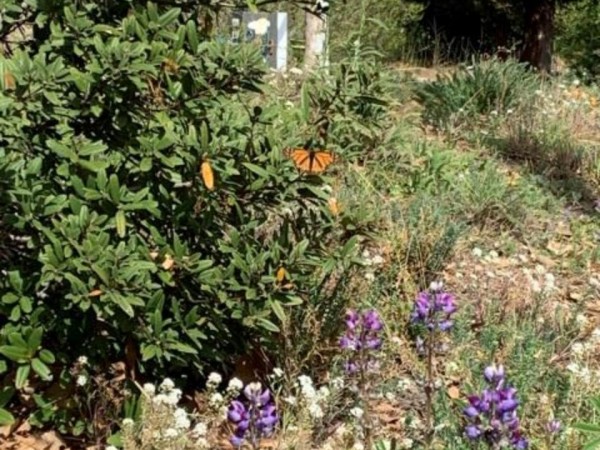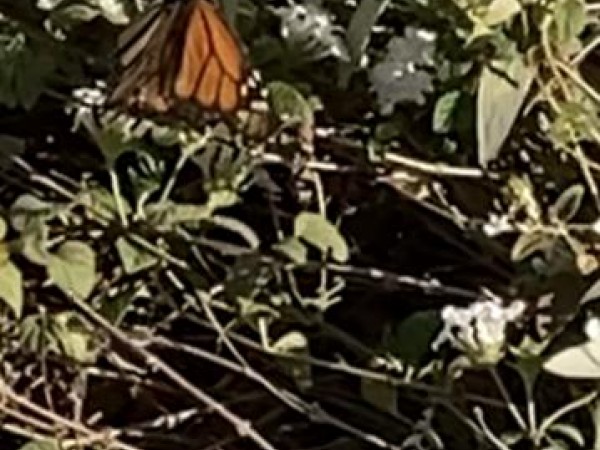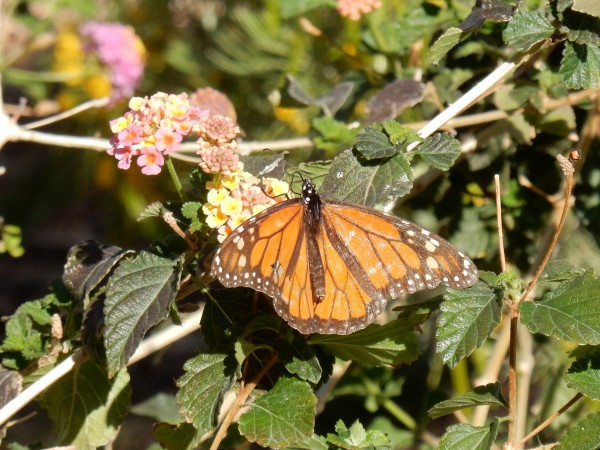Letter from Gail Morris: Western Monarch Spring 2022 Report #1
Published: 03/23/2022
Dear Western Monarch Friends,
Monarch sightings are on the rise this week particularly in Southern California but also more inland in Moreno Valley. A monarch was also reported in Las Vegas, Nevada, and several were seen in Arizona. As the migration continues, keep an eye out for worn-winged and aged overwintering monarchs expanding their range your way. Is your milkweed up and hearty nectar ready?
Western Monarch Sightings
There were several “first sightings” this week as well as multiple monarchs reports:
Susan in El Segundo, California, saw two monarchs on March 10. “2 flying at 9:30 am.”
On March 13, Joyce in Mountain View, California, reported: “Saw (7) monarchs at Google today. It was 65 degrees, calm and partly sunny. This faded guy was enjoying the sun. Lots of flowers for them there to enjoy.”
On March 14, Bob in Chandler, Arizona, saw one monarch. “While pruning a tree in the backyard I saw a monarch flying around in the backyard. Briefly landed on lantana and then flew over the fence into the neighbor's yard. Gone before I could determine sex or condition.”
Tim in Los Angeles, California reported one monarch on March 14. “Adult. Third monarch seen over the last couple of days. This one fed quite a while on flowers in front of the library. Wings appear tattered.” Meanwhile on March 15, Riva, also in Los Angeles, saw her first monarch of the season. “It was flying in my front yard.”
Kathy in Tucson noticed one monarch on March 15 in Tucson, Arizona. “One lone adult monarch fluttering around in Purple heart park.”
Tamara in Las Vegas, Nevada, spotted a monarch on March 17. “While pruning pomegranates at the UNR Research Orchard in North Las Vegas, I spotted our resident Monarch floating among the other blossoming trees. I slowly crept closer as it fed on an Aprium, but as I moved to take a photo, it floated on towards the peaches, where it blended in to feed and float some more. This was right at Noon, the same time we've seen it exhibit this behavior before. The temperature was 63, sunny, with virtually no breeze. 20 minutes later it was spotted near the pluots, still enjoying the sweet blossoms of the front grove.”
Cindy in Valley Center, California, reported her first monarch sighting of the year. “Beautiful healthy monarch flew by as I was planting in the garden. My first one in 2022!”
Diane in Moreno Valley, California, counted 8 monarchs on March 19. “Sighted 2 mating couples and 4 other individual.”
Looking for Remigrants!
Monarchs that overwintered in California (or possibly other locations) usually have wings with missing scales and faded color giving a worn, aged look to these hearty travelers. I’m sharing with you today a photo of two monarchs with worn wings from March several years ago as examples. It’s easy to see if a wing is ripped or torn but sometimes it’s more difficult to notice worn wings until after you look at your photo and zoom in. Some monarchs have a triangular notch in the trailing edge of a wing, possibly from a bird who took a bite and didn’t like the taste. How worn a monarch may look varies depending on their experience of winter roosting in the trees. Remigrant monarchs do not look fresh and new since many of them are now at least 5 to 6 months old depending on where they began their fall migration. If you can, take a photo and try to see the condition of the monarch’s wings and include this information in your report to Journey North. Also include what the monarch was doing if you can such as “flying overhead”, or “feeding on a zinnia flower.” We’ll include your photo and information in next week’s update.
Spring Migration Sightings Are Important!
As the monarchs leave the California coast and move inland, we need your help to track their progress. Where are they now? If you are seeing monarchs, be sure to report to Journey North whether they are adults or eggs or larvae. Provide as much information as you can such as weather conditions (it’s okay to estimate). Your detailed description of what you see can include, but is not limited to, the monarch’s gender and activity and, if known, the type of flowers if they are nectaring. If you can, observe the condition of the wings – are they fresh and new or worn and tattered or something in between – helps us learn more about monarch age and survival. We realize it isn’t always possible, but please take a photo if you can. Thanks so much for your help.
Gail Morris is the Coordinator of the Southwest Monarch Study (www.swmonarchs.org), a Monarch Watch Conservation Specialist, and the Vice President of the Monarch Butterfly Fund, the Central Arizona Butterfly Association and the Western Monarch Advocates. The Western Monarch Population News is based on comments provided to Gail Morris. We hope to increase the number of sightings and therefore photos and comments entered into Journey North. We rely on the volunteers who communicate regularly with Gail and who agree to participate in our effort to increase awareness of the population of western Monarchs. You can reach her at gail@swmonarchs.org




